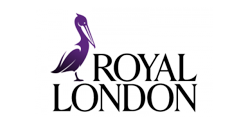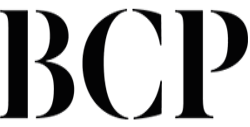
Inflation is a sustained increase in the general price level of goods and services in an economy over time. It can erode the purchasing power of a currency, increase the cost of living, and reduce economic growth. Inflation can be caused by a variety of factors, and different countries use different strategies to contain or reduce it. In this blog post, we will explore the causes of inflation and the measures commonly used by countries to manage it.
When the demand for goods and services in an economy exceeds the available supply, it can lead to a rise in prices. This can happen due to factors such as increased government spending, low interest rates, and growth in consumer spending. When demand outstrips supply, businesses can raise their prices to increase profits (What I call “Greedflation”). This results in an increase in the general price level of goods and services.
This type of inflation occurs when the costs of production increase, and businesses pass on these costs to consumers. For example, if the price of oil increases, the cost of production for businesses that rely on oil will also increase. These businesses will then raise the prices of their goods and services to maintain their profit margins.
When there is an increase in the money supply in an economy, it can lead to inflation. This happens because the value of money decreases when there is more of it in circulation. Central banks can increase the money supply by printing more money or by lowering interest rates. Subsidies provided during COVID will have contributed to this, which can lead to an increase in consumer spending, and then can cause inflation.
Inflation can also occur due to disruptions in the supply chain. For example, if there is a shortage of raw materials or a disruption in the transportation of goods, the cost of production can increase. This can lead to an increase in prices for consumers. For example, lockdowns in China caused delays in supply of car parts, which caused a delay in new car deliveries and then increased used car prices.
Inflation can also be caused by changes in exchange rates. When the value of a country’s currency decreases relative to other currencies, the cost of imports increases. This can lead to higher prices for goods and services that are imported. For example, if the US dollar depreciates relative to the euro, the cost of imported goods from Europe will increase.
Central banks use monetary policy to manage inflation. They can raise interest rates to reduce the money supply and slow down consumer spending. This can help to control inflation by reducing demand for goods and services. This will generally happen for consumers where they have increased mortgage costs and thus reduced budget for luxuries. Consumers can also be incentivised in higher interest rates to save more as they are getting a better return on their money (but banks in Ireland have not yet passed on the benefits of higher interest rates in deposit interest?) On the other hand, central banks can also lower interest rates to stimulate economic growth. However, this can also lead to an increase in inflation if consumer spending increases too quickly.
Governments can use fiscal policy to manage inflation. They can reduce government spending to reduce aggregate demand and slow down consumer spending. This can help to control inflation by reducing demand for goods and services. This is an argument that has caused controversy in the Construction Industry – prices have been pushed up by inflation and a lack of supply of materials and labour, but if the Government increases spending to improve housing supply, then it only exacerbates the inflationary pressure. Alternatively, governments can increase taxes to reduce consumer spending. However, this can also have a negative impact on economic growth.
Supply-side policies are measures that focus on increasing the supply of goods and services in an economy. This can help to reduce the pressure on prices by increasing the availability of goods and services. Examples of supply-side policies include deregulation, privatization, and investment in education and training. To help with housing shortage, the government should be incentivizing education and apprenticeships in the construction sector
Other methods to control inflation, but which are generally avoided by modern economies due to consequences for Investors and Employers in open economies with multinational trade:
Governments can also implement wage controls to manage inflation. This involves setting limits on the amount that employers can increase wages. This can help to control inflation by reducing the cost of production for businesses. However, this can also have negative effects on employment and economic growth.
Governments can also implement import controls to manage inflation. This involves restricting the amount of imported goods that can enter an economy. This can help to support indigenous industry and drive down the spend on luxury goods which would generally be imported. China would have exercised this practice in the past with certain luxury goods and cars from USA and Europe.
Article written by Joe Carroll, Practice Director at Clevermoney.
These are the opinions of the writer and do not constitute financial advice – those seeking advice should contact us or their own independent adviser for assistance.
We provide instant pensions
Address
Curragh View House,
Ballinagar,
Tullamore, Ireland, R35XF38
Phone
(057) 935 0079
info@clevermoney.ie
Opening Hours
Mon to Fri 9am to 6pm
Our Partners















Have Any Questions?
Ask us anything, we’d love to answer!

Charterhouse Private Clients Ltd t/a Clevermoney was set up in 2006 by Joe Carroll, a former Bank Manager. He has more than 20 years’ experience in Insurance, Pensions, Mortgages and Financial Services, both in Ireland and in the UK. The Company now has a team of experienced and skilled Financial Advisers to help you with almost any aspect of Financial Planning.
Explore
Quick Links
Recent News
Our Newsletter
© 2023 Charterhouse Private Clients Ltd t/a Clevermoney is Authorised by the Central Bank of Ireland.